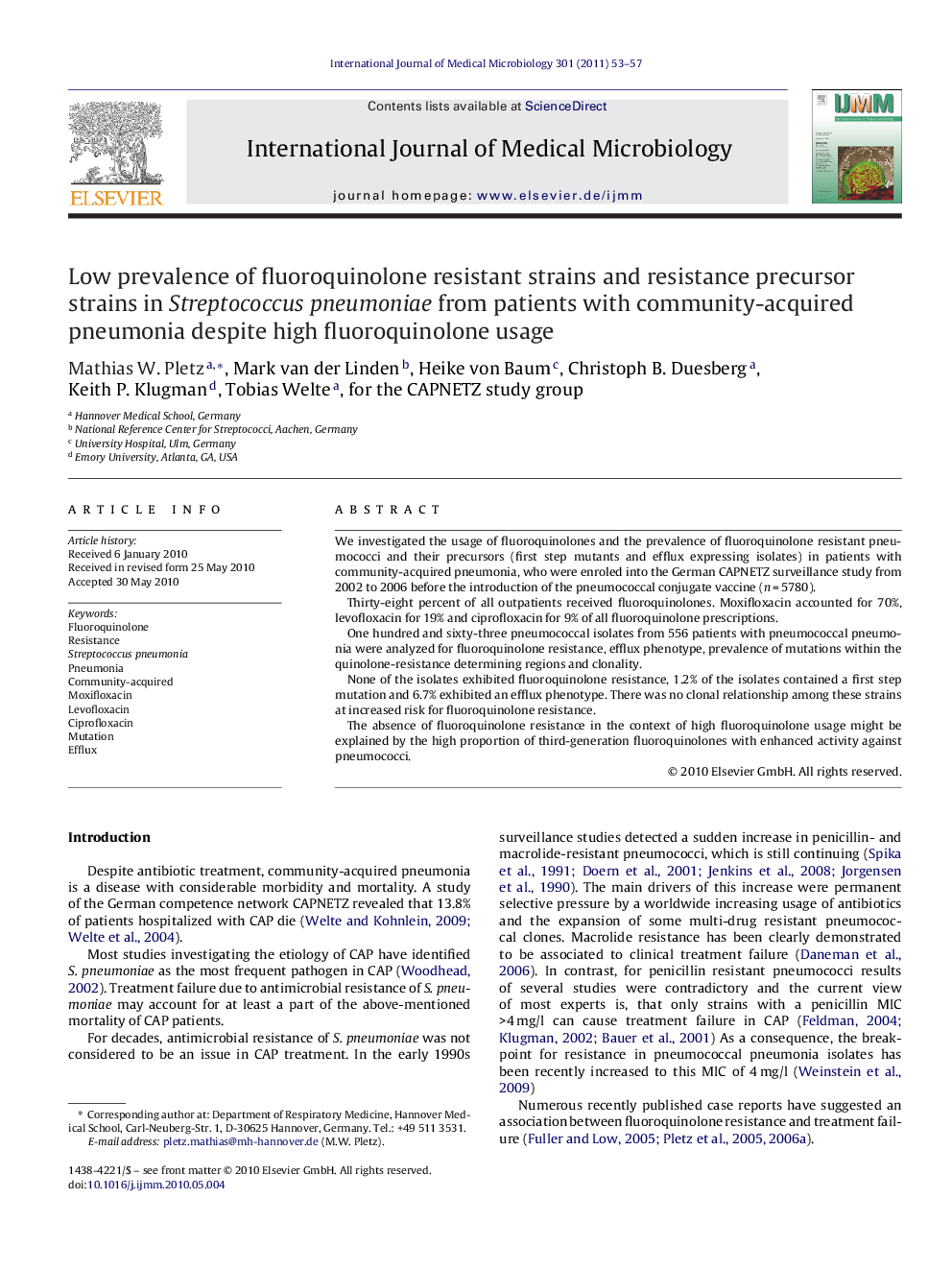| Article ID | Journal | Published Year | Pages | File Type |
|---|---|---|---|---|
| 2054415 | International Journal of Medical Microbiology | 2011 | 5 Pages |
We investigated the usage of fluoroquinolones and the prevalence of fluoroquinolone resistant pneumococci and their precursors (first step mutants and efflux expressing isolates) in patients with community-acquired pneumonia, who were enroled into the German CAPNETZ surveillance study from 2002 to 2006 before the introduction of the pneumococcal conjugate vaccine (n = 5780).Thirty-eight percent of all outpatients received fluoroquinolones. Moxifloxacin accounted for 70%, levofloxacin for 19% and ciprofloxacin for 9% of all fluoroquinolone prescriptions.One hundred and sixty-three pneumococcal isolates from 556 patients with pneumococcal pneumonia were analyzed for fluoroquinolone resistance, efflux phenotype, prevalence of mutations within the quinolone-resistance determining regions and clonality.None of the isolates exhibited fluoroquinolone resistance, 1.2% of the isolates contained a first step mutation and 6.7% exhibited an efflux phenotype. There was no clonal relationship among these strains at increased risk for fluoroquinolone resistance.The absence of fluoroquinolone resistance in the context of high fluoroquinolone usage might be explained by the high proportion of third-generation fluoroquinolones with enhanced activity against pneumococci.
